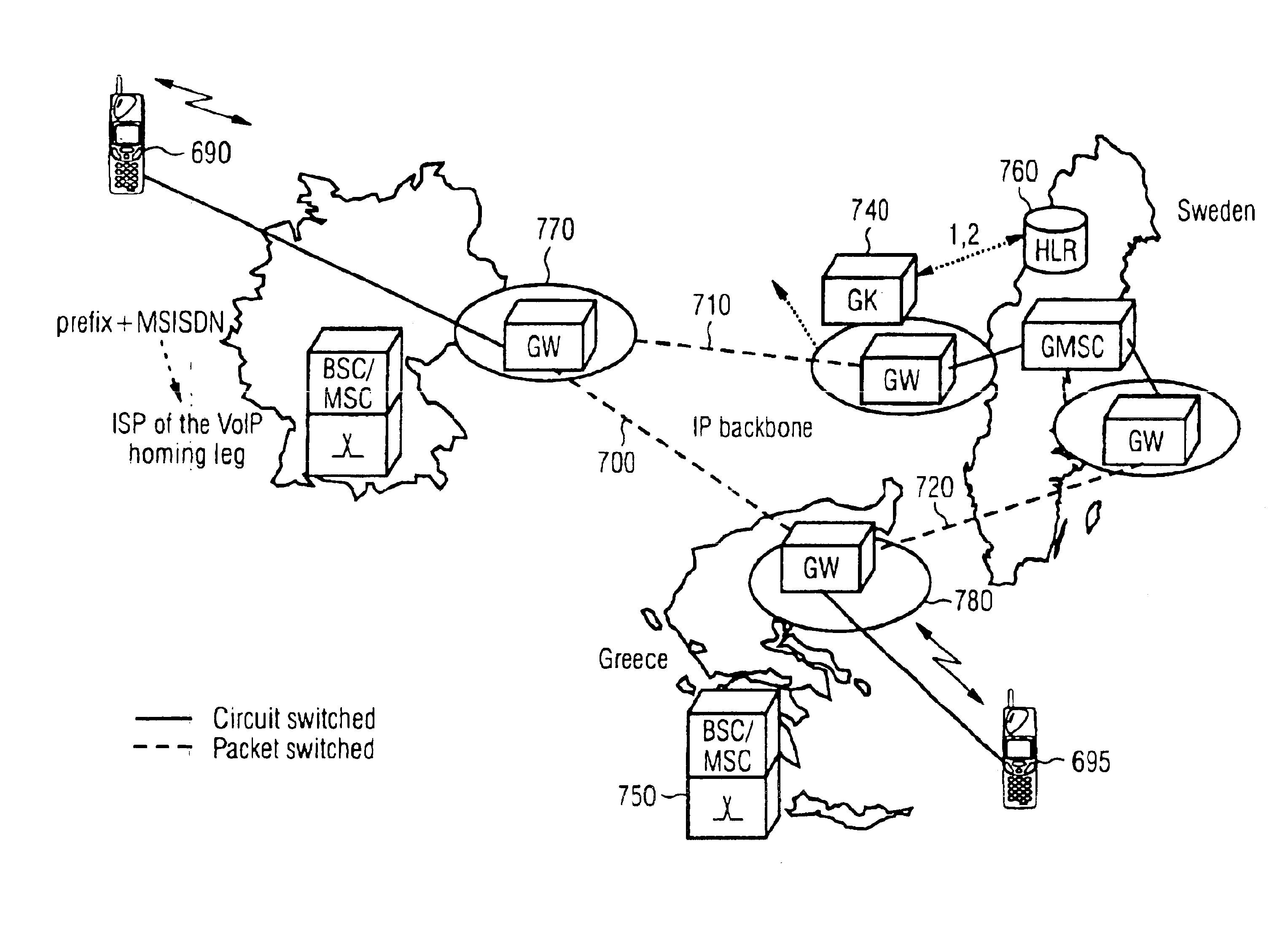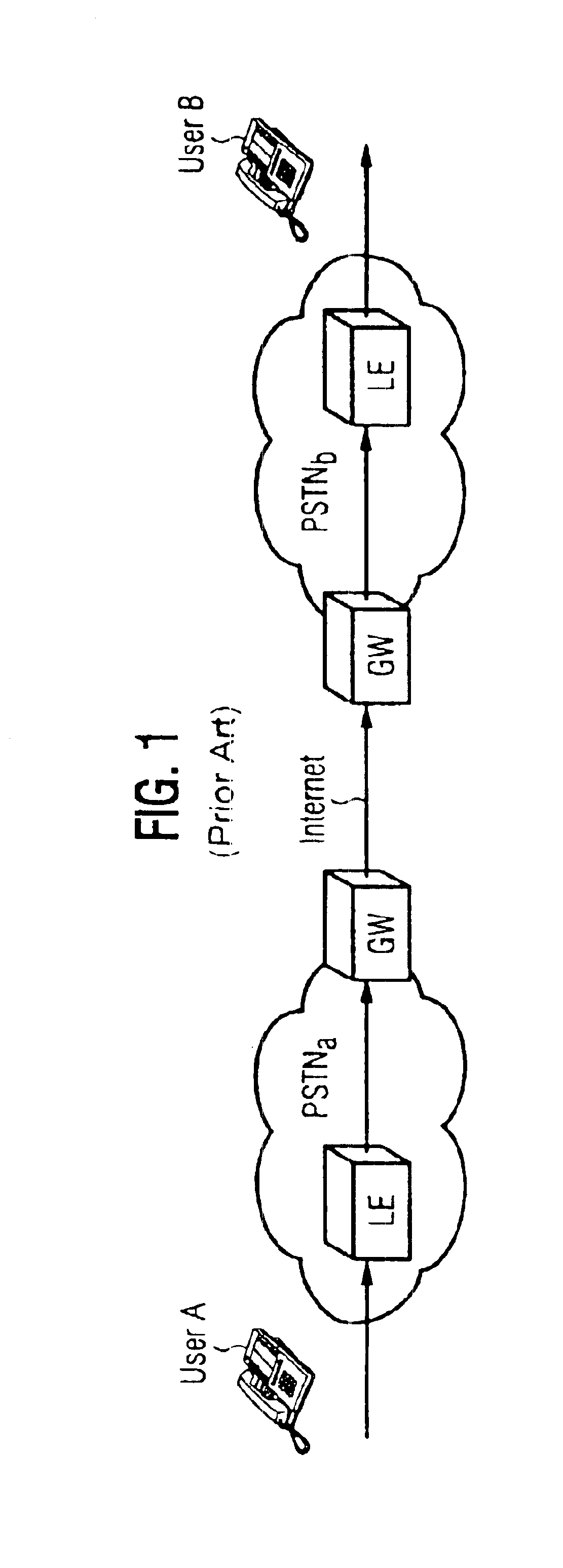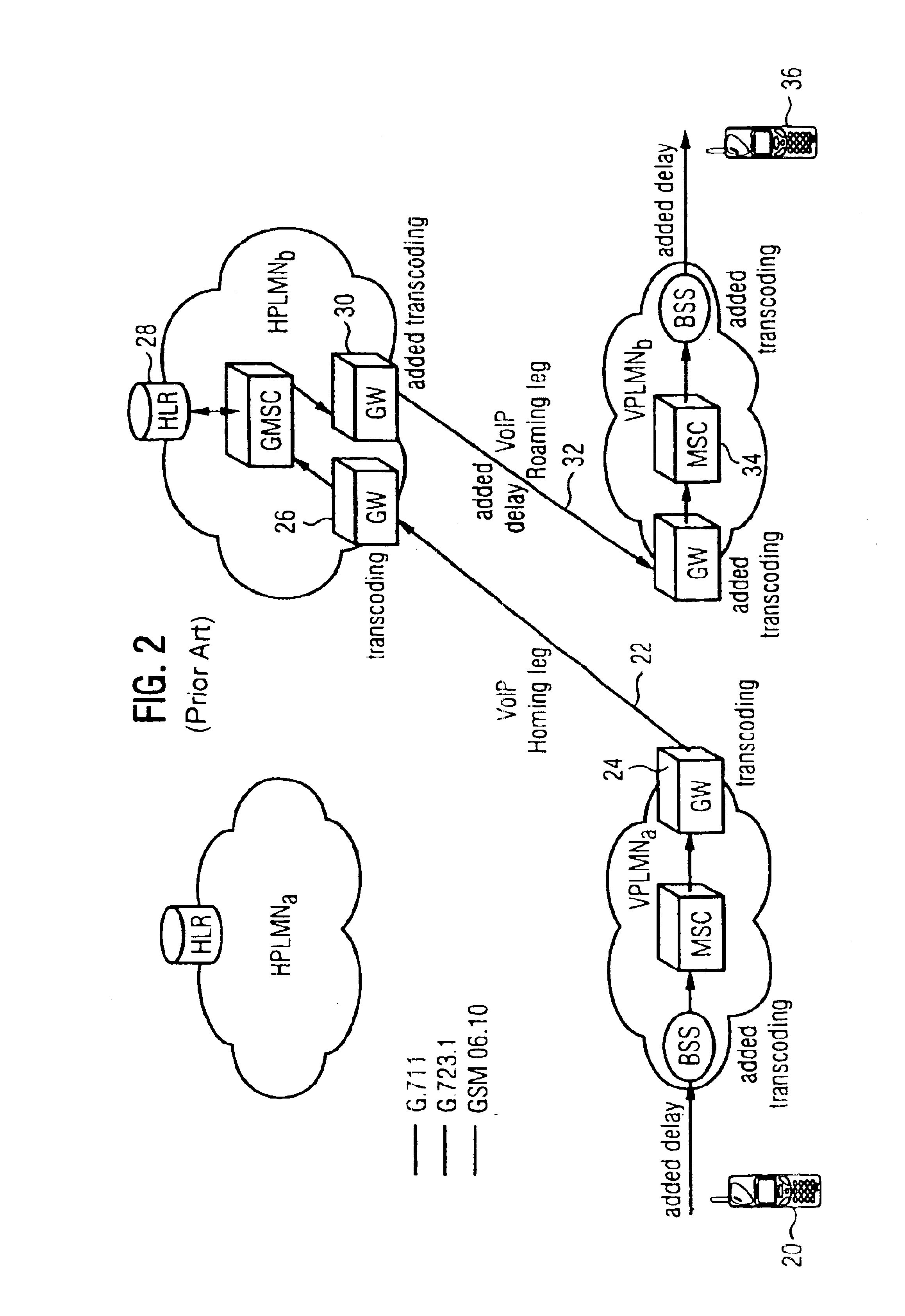Methods and systems for call routing and codec negotiation in hybrid voice/data/internet/wireless systems
a technology of hybrid voice/data/internet/wireless system and call routing, applied in the field of routing and coding, can solve the problems of long call delay, unpredictable speech quality, and call routing, and achieve the effect of minimizing the number of transcodings, and minimizing the bandwidth used in the ip network
- Summary
- Abstract
- Description
- Claims
- Application Information
AI Technical Summary
Benefits of technology
Problems solved by technology
Method used
Image
Examples
Embodiment Construction
The following exemplary embodiments are provided in the context of communication systems, a portion of which are TDMA radiocommunication systems. However, those skilled in the art will appreciate that this access methodology is merely used for the purposes of illustration and that the portions of the communication systems which involve radio links according to the present invention can be implemented using any type of access methodologies including frequency division multiple access (FDMA), TDMA, code division multiple access (CDMA) and hybrids thereof.
Moreover, operation in accordance with GSM communication systems is described in European Telecommunication Standard Institute (ETSI) documents ETS 300 573, ETS 300 574 and ETS 300 578, which are hereby incorporated by reference. Therefore, the operation of the GSM system is only described herein to the extent necessary for understanding an exemplary manner in which wireless access can be made to a communication system in accordance w...
PUM
 Login to View More
Login to View More Abstract
Description
Claims
Application Information
 Login to View More
Login to View More - R&D
- Intellectual Property
- Life Sciences
- Materials
- Tech Scout
- Unparalleled Data Quality
- Higher Quality Content
- 60% Fewer Hallucinations
Browse by: Latest US Patents, China's latest patents, Technical Efficacy Thesaurus, Application Domain, Technology Topic, Popular Technical Reports.
© 2025 PatSnap. All rights reserved.Legal|Privacy policy|Modern Slavery Act Transparency Statement|Sitemap|About US| Contact US: help@patsnap.com



